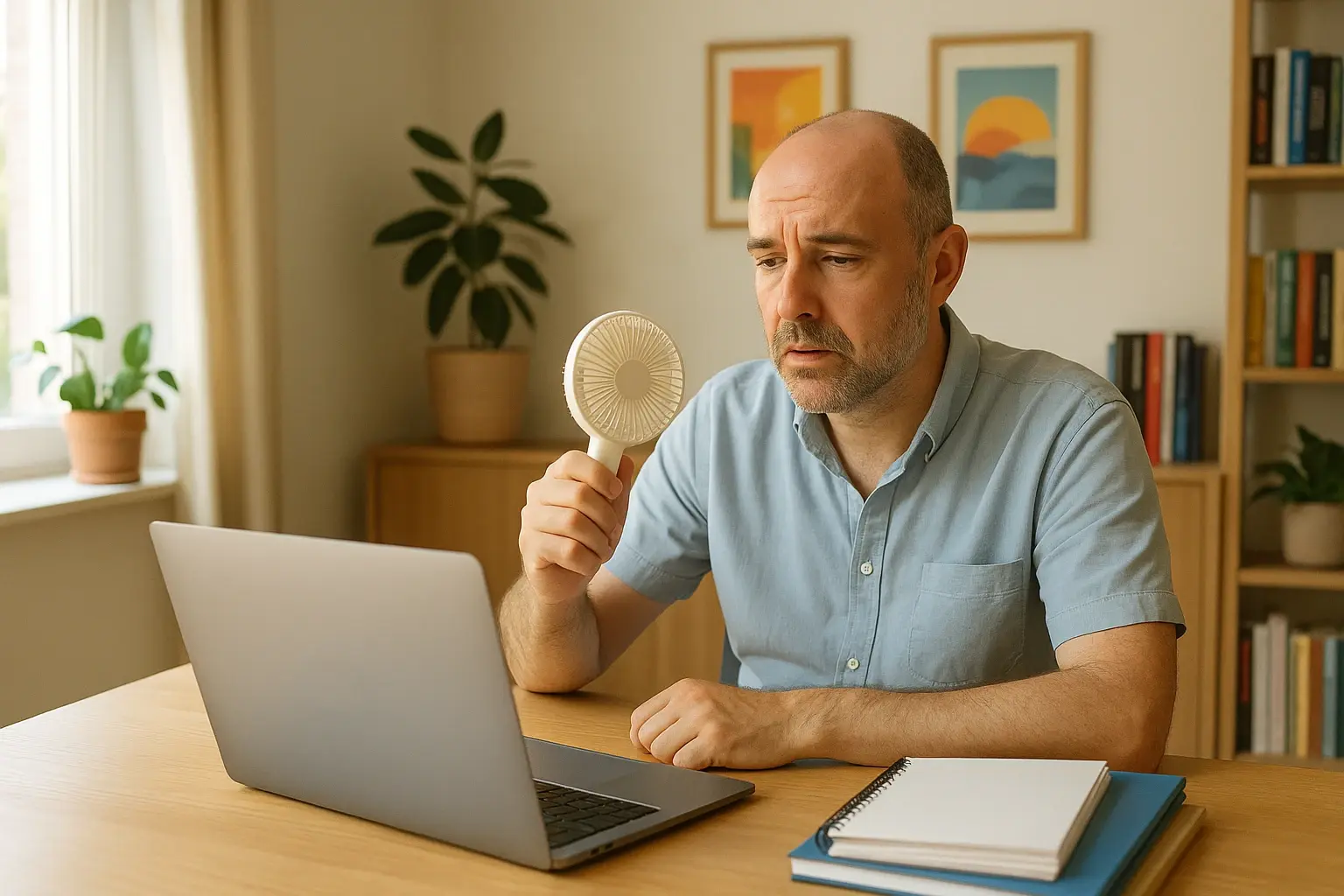If you’ve ever spent a sweltering summer afternoon trying to edit video, design visuals or pitch to a client while slowly melting into your chair, you’ve probably considered investing in air-conditioning. But before you splash out, it’s worth asking: can your business claim tax relief on the cost?
The short answer? It depends on what you buy, where it’s installed and how your business is set up.
Let’s break it down.
Portable vs Permanent Air-Conditioning: What’s the Difference?
Portable Units
Portable air-conditioning units (like the ones on wheels you can move from room to room) are treated by HMRC as plant and machinery. That’s good news. It means the full cost is normally tax-deductible in the year you buy it, using the Annual Investment Allowance (AIA).
So if your business buys one or more portable units, and they’re genuinely used for work purposes, you can usually claim 100% tax relief upfront.
✅ Qualifies for AIA
✅ Claimed via capital allowances
✅ Applies to both sole traders and limited companies
Permanent Installations
Installing a fixed air-conditioning system - like wall-mounted units, ducting, or external condensers - gets a bit more technical from a tax point of view.
HMRC treats most fixed systems as “integral features” of a building under section 33A of the Capital Allowances Act 2001. This includes:
- Air cooling systems
- Ventilation ductwork
- Electrical systems powering the unit
Here’s how tax relief works:
Integral features qualify for the Annual Investment Allowance (AIA). So if your total spend is within the AIA limit (currently £1 million per business per year) you can still claim 100% tax relief upfront just like with portable units.
If your total qualifying expenditure exceeds the AIA limit, the balance of the cost qualifies for 6% Writing Down Allowances (WDA) each year, on a reducing balance basis.
So while permanent systems might look like a slower route to tax relief, in reality, you can still get full and immediate tax relief, provided your total spend across the business doesn’t exceed the AIA threshold.
💡 Tip: If you’re fitting out a new creative space or doing broader renovations, factor air-conditioning into your AIA planning to maximise relief.
Where Is It Installed? Business Premises vs Home Office
Business Premises
If your business rents or owns dedicated premises (like an office or studio) and the air-conditioning is installed there, it’s easier to justify the expense as wholly for business use.
- Portable units: full AIA relief almost certainly applies
- Permanent systems: likely qualify as integral features and eligible for full AIA if within limit
- Running costs (e.g. electricity and servicing): also tax deductible
This applies to both sole traders and limited companies.
Home Office
If you work from home, the tax picture gets a little trickier.
HMRC is strict when it comes to expenses that offer a dual benefit (personal and business use). Relief is only available where the cost is wholly and exclusively for business purposes.
Portable Units at Home
- If you buy a portable unit and use it only in your home office, you may be able to claim AIA on the business-use proportion.
- Be ready to apportion the cost and justify why it's a business expense.
Permanent Air-Con at Home
- Installing fixed air-conditioning at home is unlikely to qualify in full.
- If it’s part of a room that has both personal and business use (e.g. your spare bedroom office) HMRC will usually deny relief.
- If it’s a space used exclusively for business (like a converted outbuilding) you may be able to claim capital allowances but this could trigger Capital Gains Tax issues when you eventually sell your home, as that portion may no longer qualify for full Private Residence Relief.
⚠️ Best practice: avoid claiming tax relief on permanent structural alterations to your home unless you’re absolutely confident they are for exclusive business use and you're happy to accept future tax implications.
Sole Traders vs Limited Companies
The capital allowances rules (including AIA and WDA) apply to both sole traders and companies but how they’re interpreted differs in practice.
Sole Traders
- Face greater scrutiny over dual-use items at home
- Must apportion any mixed-use costs
- Risk losing part of Private Residence Relief if a room is used exclusively for business and then permanently altered
Limited Companies
- Easier to justify full relief for equipment installed in separate business premises
- If installed in a director’s home, the company may need to treat it as a benefit-in-kind which could lead to extra tax and National Insurance for the director
💡 A company paying for air-conditioning in a director’s personal home is rarely tax-efficient unless part of a clear business arrangement, like a lease of a home office or studio.
Final Thoughts
Yes, your business can claim tax relief on air-conditioning but the rules vary depending on:
- Whether the unit is portable or permanently installed
- Whether it’s used in business premises or at home
- Whether you’re operating as a sole trader or through a limited company
In general:
- Portable units are simple, effective, and usually eligible for 100% relief.
- Permanent systems also qualify for 100% relief if you stay within your AIA limit.
- Home installations are tricky and often offer little to no relief unless carefully structured.
Want to Keep Your Tax Bill as Cool as Your Studio?
At ESXR, we help creative businesses like yours navigate the quirks of the UK tax system. Making sure your studio setup is as tax-smart as it is stylish.
Thinking of cooling down your workspace? Let’s talk first, and we’ll help you claim what you’re entitled to, without any hot air.
Need help?
Why not book a meeting with us to discuss your circumstances and see how we can help.
Found that content useful?
Why not sign up for more good stuff!!


